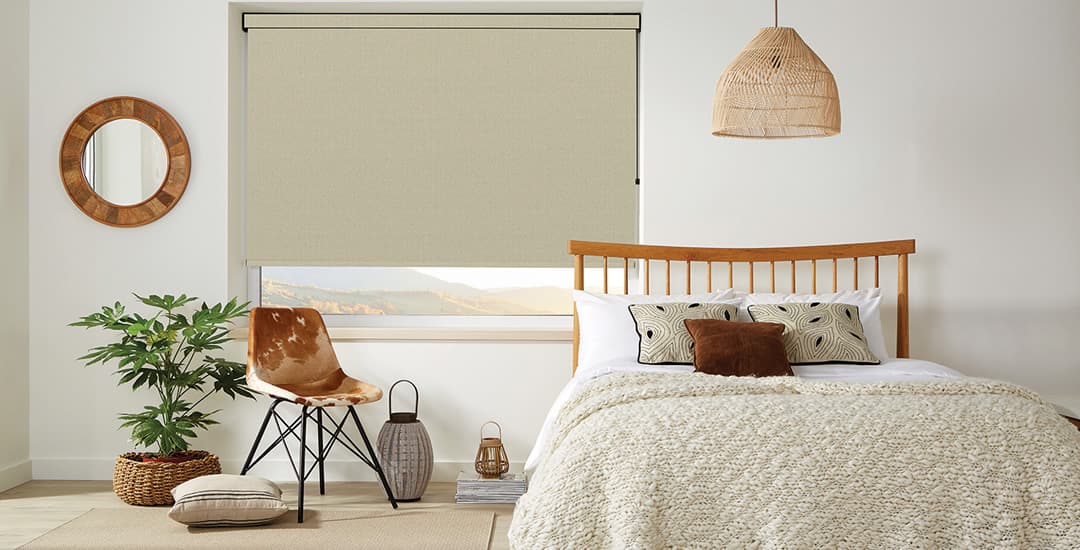
First and foremost, the appearance and style; but how the two blinds operate is slightly different too. Roller blinds and Roman blinds do arguably have more in common than they do apart, being as they’re both made of one solid sheet of fabric and open and close in one motion without the ability to angle them to filter light; but they’re quite different in many ways as well.
This blog post will tell you the difference between a Roman blind and a roller blind in both visual and functional terms.
What is the difference between a Roman blind and a roller blind visually?
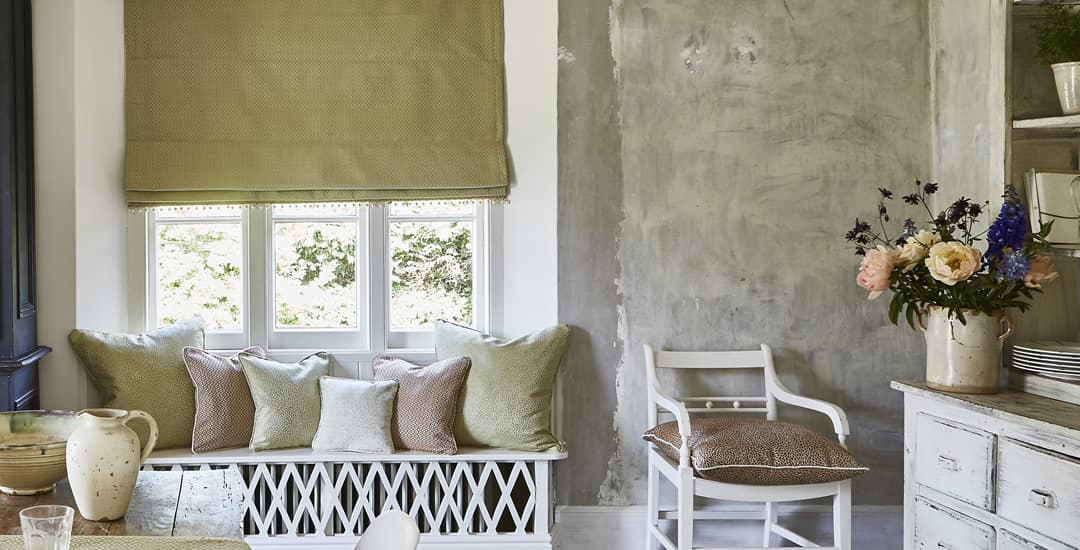
Roller blinds and Roman blinds are both made of fabric, although the type of fabric can vary. Roller blinds tend to be made of either polyester, or waterproof PVC or vinyl, whilst Roman blinds tend to be made of higher-end fabrics, including a range of synthetic fabrics but also potentially velvet, linen, silk, and various other things.
When closed, roller blinds form one flat sheet of plain fabric, whilst Roman blinds form a series of uniform pleats.
When you open the blinds, the fabric of a roller blind rolls up around the tube at the top; whilst Roman blinds concertina up into their pleats by means of integrated lift cords, and so form a stack of pleats at the top of the blind, but the fabric of a roller blind effectively disappears as it rolls itself around the tube.
Also, whilst both roller blinds and Roman blinds come in a huge range of different colours, patterns, designs, and textures, Roman blinds are a premium, luxury product and so will often have a particularly striking and eye-catching appearance, and may be made of designer or luxury fabrics.
What is the difference between a Roman blind and a roller blind functionally?
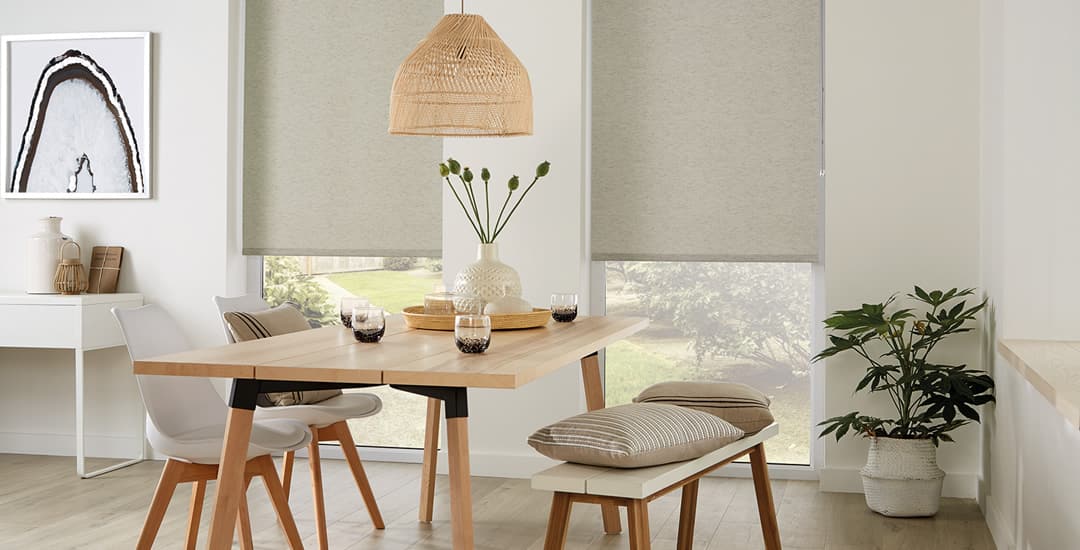
When it comes to the operation of the blinds themselves, for the person using them, they’re effectively the same. But as mentioned, a roller blind rolls up, whilst a Roman blind concertinas up.
Depending on the fabric that they’re made of, roller blinds may be waterproof, which means they’re suitable to use in kitchens and bathrooms. However, Roman blinds are rarely if ever made in waterproof fabrics, and so aren’t suitable for rooms like these, or other rooms that are subject to a high degree of humidity or moisture.
Both Roman blinds and roller blinds can be made as blackout blinds, and with a thermally insulating lining or finish.
What is the difference between a Roman blind and a roller blind’s price?
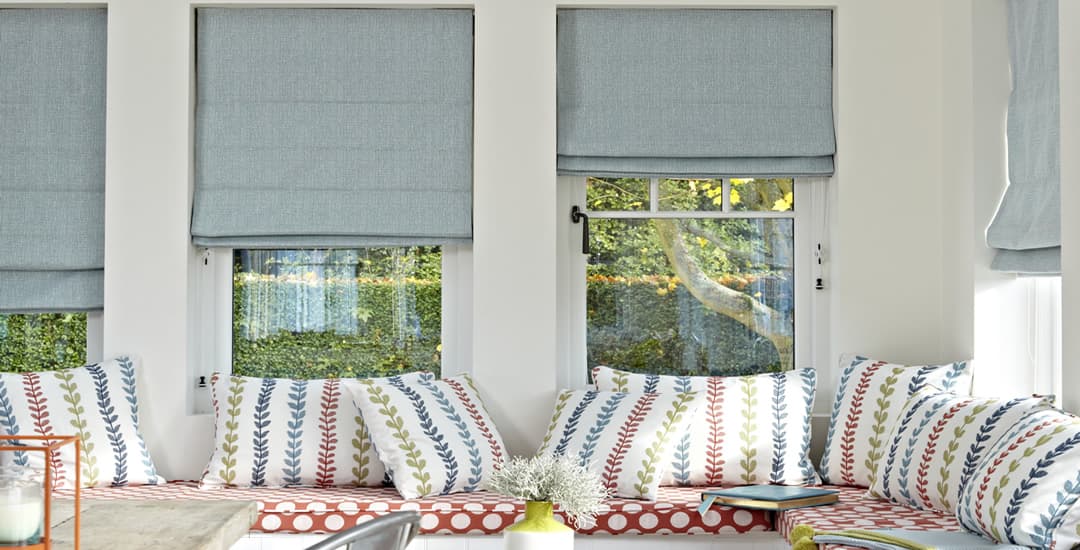
This might be the area in which you’ll see the biggest difference of all! If you ranked window blinds in order from the most economical to the most luxurious (and so, costly), roller blinds would be right at the bottom of the price scale, and Roman blinds at the top.
For example, a made to measure roller blind from our plain colour range is a high-quality but simple blind; the price of this blind at the time of writing (April 2023) for a window 120cm wide by 120cm high is £29.30.
Comparatively, a minimalistic, top-quality plain fabric Roman blind for a window of the same size costs £145.92.
That’s just a broad example, but certainly if you were looking for a budget blind you’d be better off shopping in the roller blinds category rather than the Roman blinds section!
What is the difference between a Roman blind and a roller blind’s lifespan?
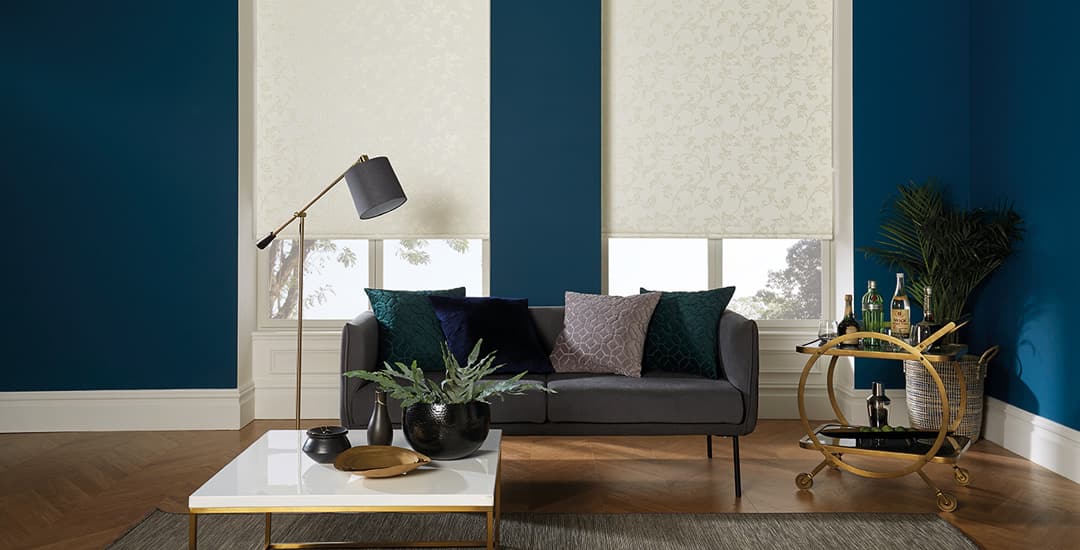
If you buy a good quality blind of either type from a reputable manufacturer, there should be no difference in the lifespan between a roller blind and a Roman blind, assuming that they’re not subject to unduly heavy handling and that you don’t, say, use a Roman blind in a room where moisture or damp are likely to effect it.
Both our Roman blinds and roller blinds of all types are designed and manufactured to achieve a lifespan of at least a decade in good working order, and many will last for far longer than this too!




